Rack Supported Mezzanines: Increasing Storage Density
As a business grows, additional space is needed to accommodate this expansion. Unfortunately, adding on to a building or moving to a new building is often an expensive investment that can halt operations for an extended period.
One way to add space to your building while avoiding an addition is a rack supported mezzanines, also known as a mezzanine racking system. They are a cost-effective solution that add additional capacity to a warehouse or distribution center by utilizing vertical space.
The number of levels varies from between operations. These systems can be up to 5 or 6 levels tall if there is vertical space.
Read below to learn more about rack supported mezzanines, including key benefits and features.
How Rack Supported Mezzanines Can Benefit a Distribution Center
A mezzanine racking system offers many important advantages to a distribution center’s operation, including:
High Throughput
Rack supported mezzanines allows for multiple loading and unloading locations of pallets and/or cartons simultaneously within the system. This can be accomplished via conveyors, VRCs, and pallet drop areas, as described in the next section.
High Density
A major advantage of rack supported mezzanines is that they provide additional vertical storage. It allows for your entire storage space to be utilized.
High Selectivity
Can be accessed by multiple employees at once. This can often eliminate ‘downtime’ during the picking process.
How to Move Items from Upper Levels to Ground Level
Something you’ll have to consider when going from a one-level system to a multi-level rack system is how you’ll move your items from the upper levels to the ground level for distribution.
There are several material handling systems that can be integrated into rack supported mezzanines. Each will successfully get your items to the ground level. Which one works best for you will depend on factors including your budget, your current picking process, and how drastically you’d like to change your picking process (such as if you’d like to semi-automate your operation).
Here are material handling options that work well with rack supported mezzanines:
Vertical Reciprocating Conveyor
VRCs are ‘elevator-like’ systems designed specifically to bring pallets or cartons of material to and from the upper levels of the mezzanine system.
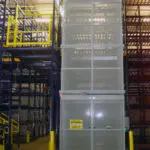
Conveyor
A conveyor system can be integrated into the catwalk system to transport products to and from the upper levels of the system.
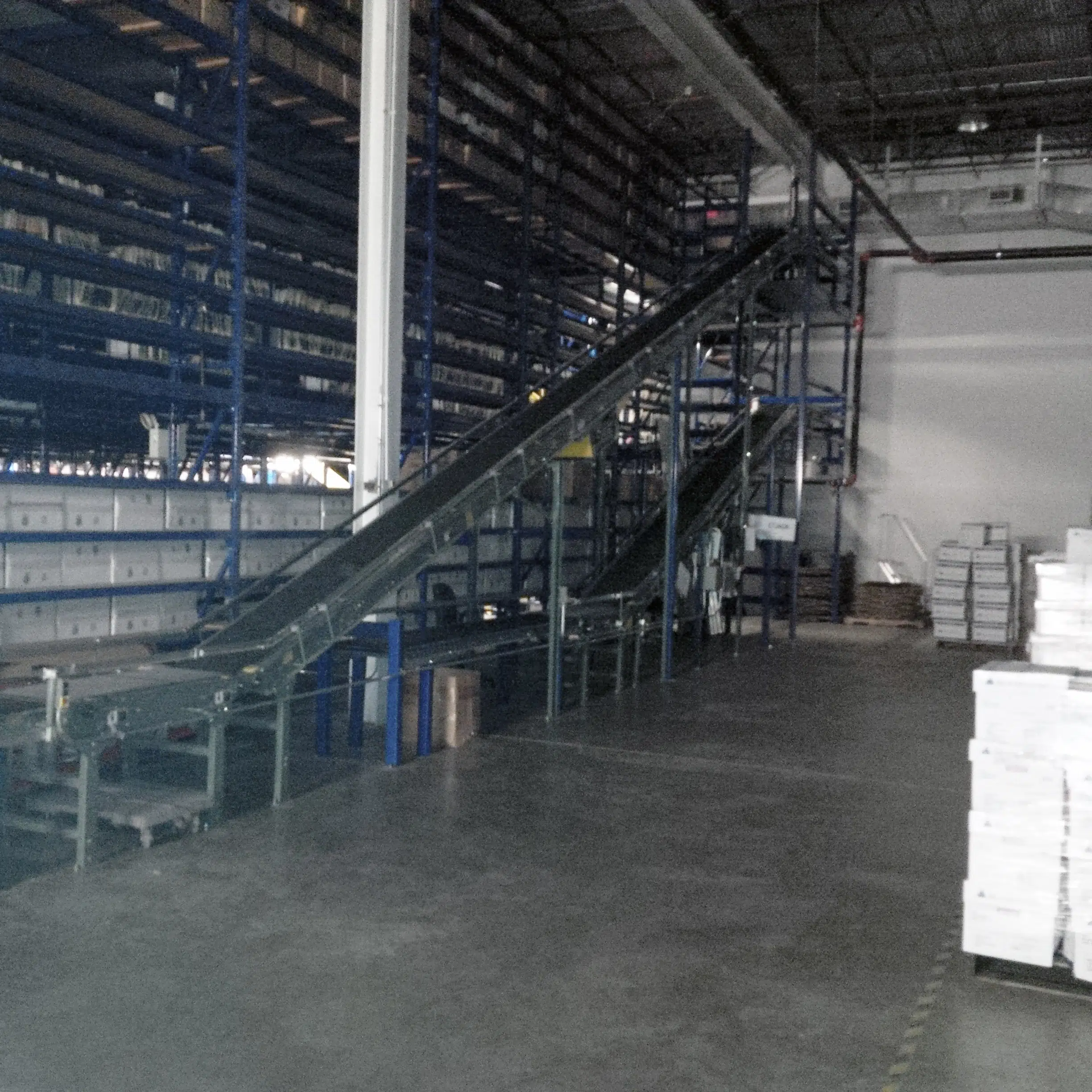
Pallet Drop Area
Pallet drops are platforms located on each level of the mezzanine system. Pallets are placed on this platform by a lift truck so that employees can load products on that level of the system from the pallet. The pallet drop typically has a safety gate to ensure employees can’t fall from the pallet drop area.
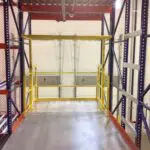
Chute
Chutes allow the picker to efficiently move any product from the upper level of the system to the floor level.
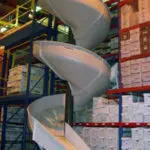
Other Components of Rack Supported Mezzanines
Rack Supported Mezzanines can have a variety of components implemented into the system, including:
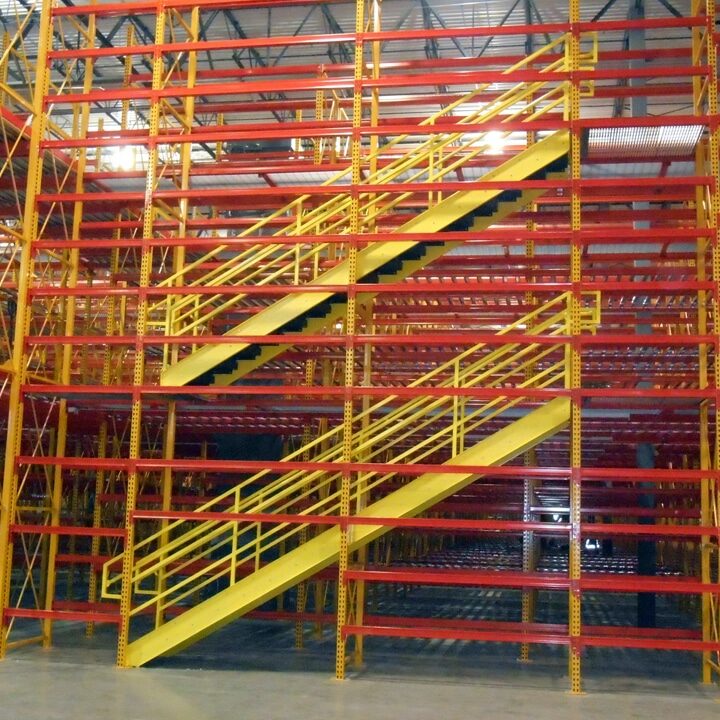
Staircases: numerous models and options available including number of rails, angles, risers, tread, and step width.
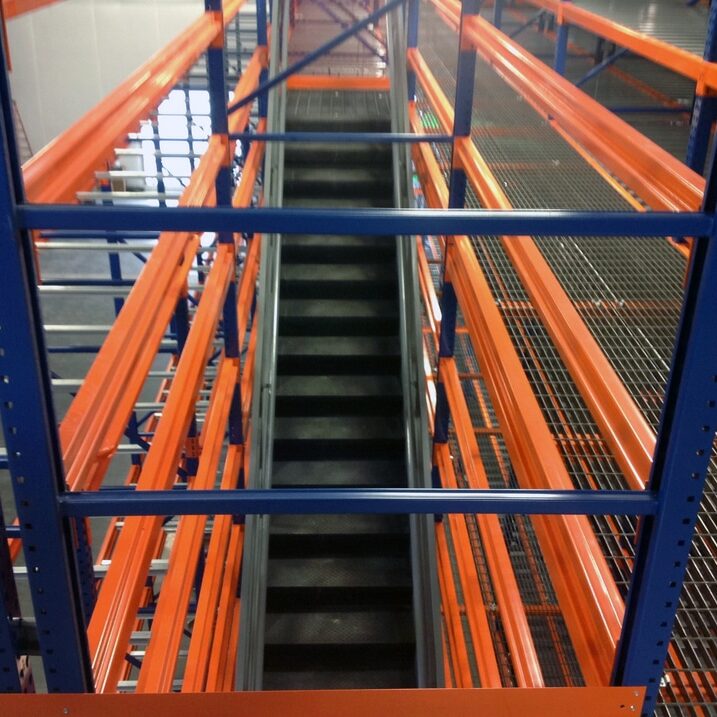
Handrails: integrated to keep employees safe.
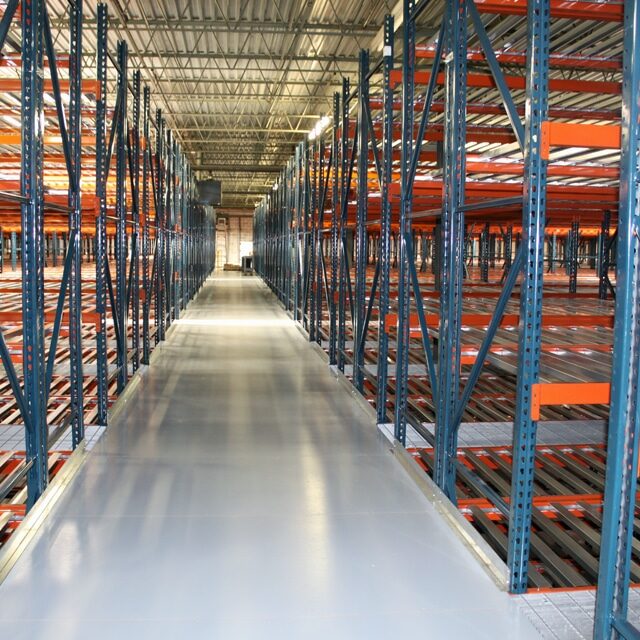
Flooring: several options available resin board, corrugated decking, bar grating, open steel planking, and concrete. Each type of floor is better suited for different functions and operational features.
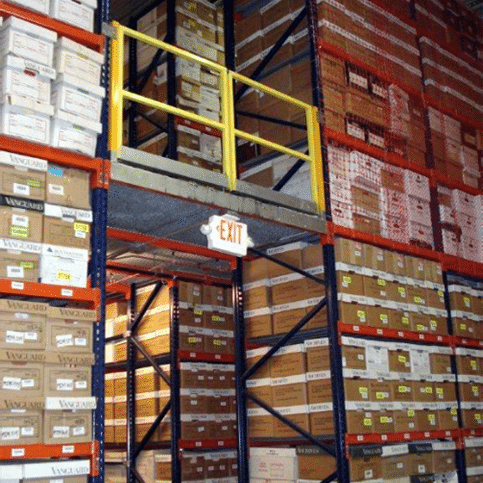
Gates: We can incorporate gates into your mezzanine to expedite proper material handling. Options include single swing gate, double swing gate, sliding gate, lift-out safety gate, and safety pivot gate.
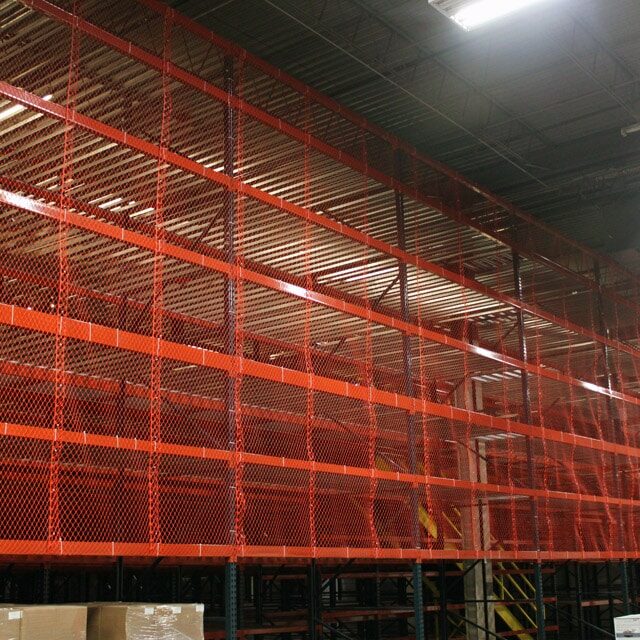
Safety Netting: The netting can ensure the safety of your stored materials and employees. The netting can stop your stored items from falling off the upper level to the lower level
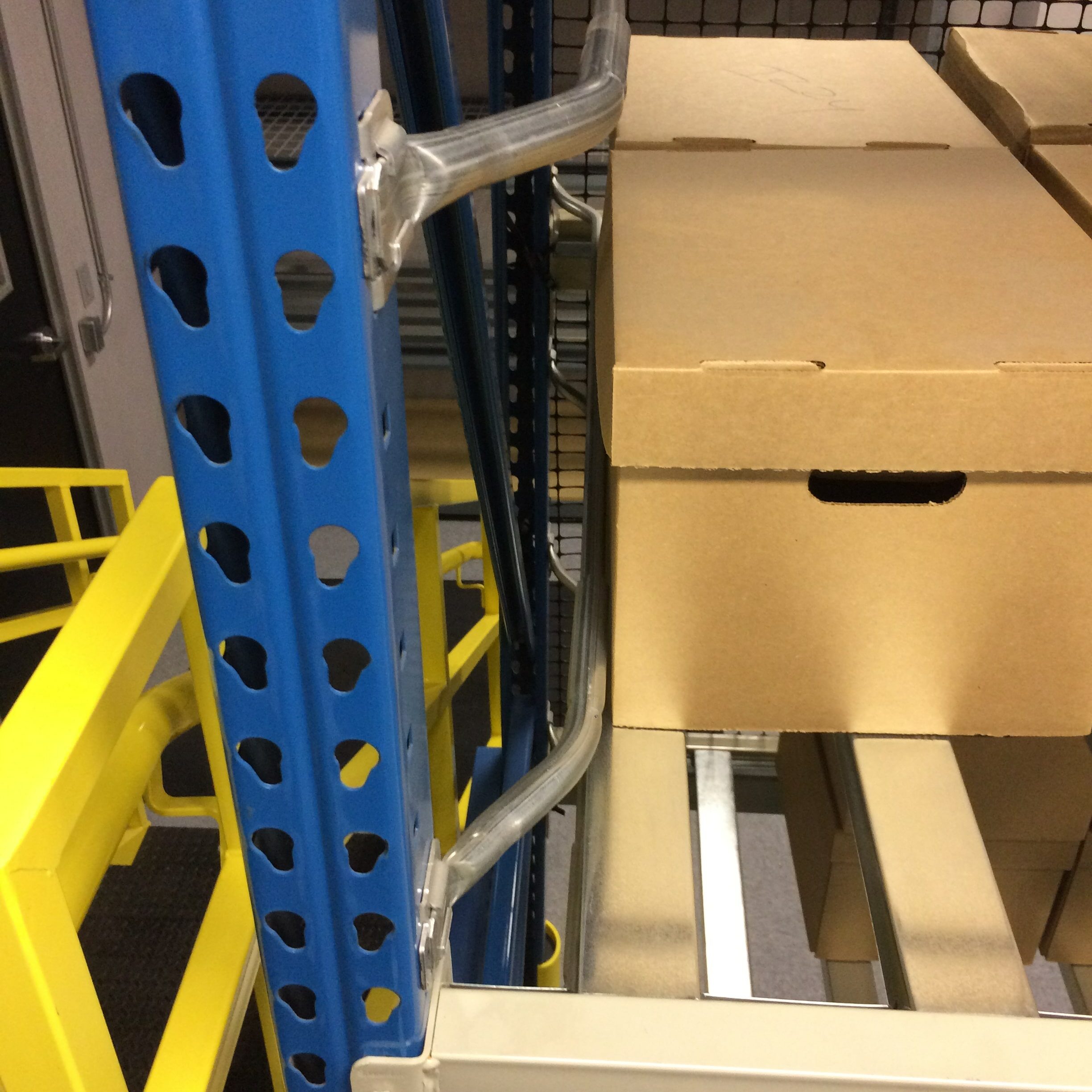
Flue Keepers: Flue keepers can be attached to the uprights to maintain correct transverse flue space. The flue keepers will prevent pallets and cartons from impinging into the transverse flue space.
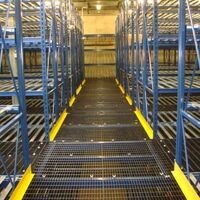
Kickplates: Can be Implemented to prevent personnel traveling on the upper levels from tripping by eliminating space along aisles and row ends. Kick plates are recommended to be installed on the upper levels of the system at all aisle row ends and along all main aisles.
Is Your Operation A Fit for Rack Supported Mezzanines?
There are many operations that are a good fit for rack supported mezzanines.
As discussed, these types of systems allow you to utilize unused vertical warehouse space, thereby increasing your storage footprint in the same space. Because of this, if your operation is considering moving buildings to add storage space, this system may be a good alternative.
If you store many cartons, this type of system is typically a good fit. This type of system allows for high density and selectivity of carton storage on all levels.
The third point we’ll touch on is if you have certain types of bottlenecks in your picking process, this type of system may be right for you. For example, if pickers are often waiting on other pickers to complete a pick. This type of system will allow your pickers to be in the same aisle at the same time. Also, due to the increased space utilization you can better separate SKUs based on what items are typically picked together.
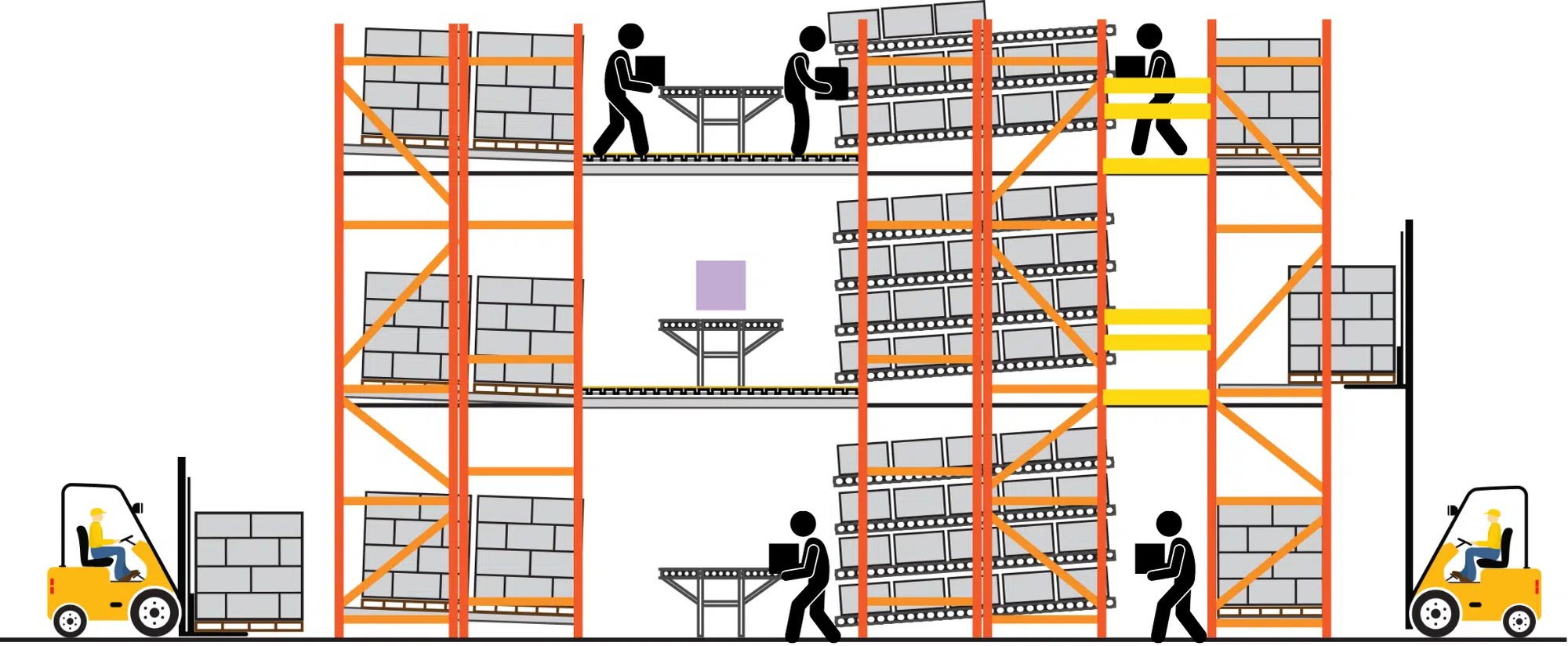
Your Next Step for Rack Supported Mezzanines
REB is highly knowledgeable and experienced in designing, project managing, and installing rack supported mezzanines.
As a systems integrator, we’ll work with you to provide a turnkey system. From design, products procurement, subcontractor management, install, and permitting support, REB handles it all for you.
REB has a talented team of in-house project managers and project designers, all highly experienced in the material handling industry. We’ll work with you to make sure that your system is the best fit for your operation, installed and completed on-time and within budget.
We’d appreciate the opportunity to help you further, whether that be more information or a quote. Fill out the contact form on this page or call (800) 252-5955 to get in touch with a REB representative.
Share this post:
Submit Your Inquiry
Since 1962
REB has completed more than 100,000 projects in 15 countries (including all 50 states) for more than 20,000 customers across 50 industries, with 70% of customers as repeat buyers.
This is made possible by our team that has more than 300 years of industry experience designing and project managing material handling systems.
Learn more about REB's award winning service.
